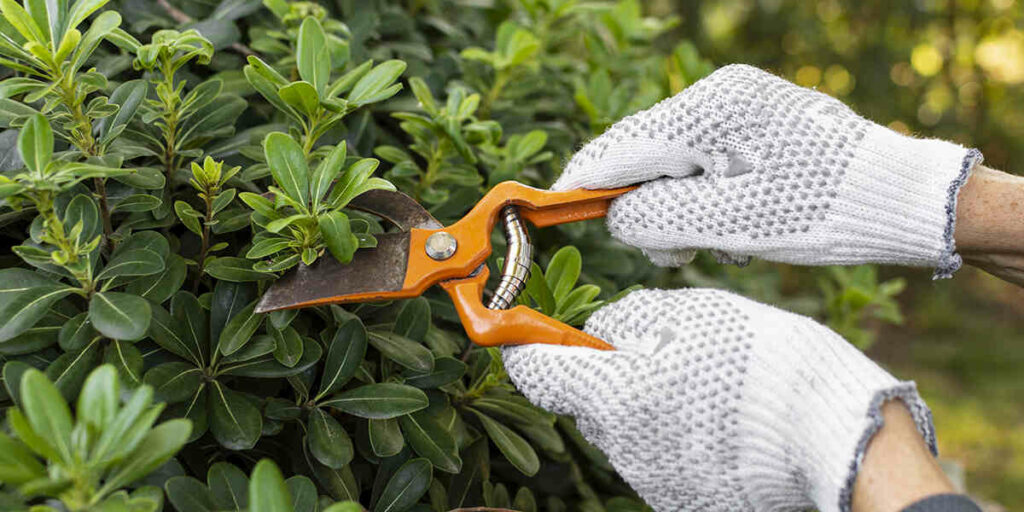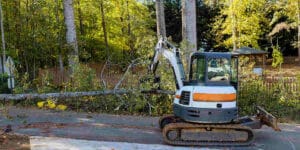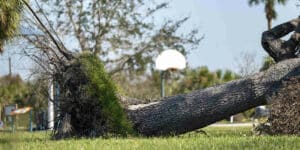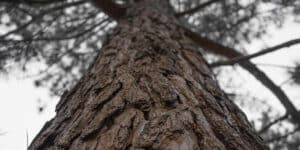Regularly trimming and pruning your trees should ensure the majestic plants you’re lucky to have in your yard thrive and bloom each growing season. Though the service is necessary, it’s not ideal to make pruning cuts without being aware of the season. The tree’s growth and its unique dormancy cycle will play an important role in its health, so when is the best time to trim trees?
Tree Care Inc. is a top-tier tree service in Louisville, KY, offering all types of tree care, including trimming and pruning services for trees and shrubs. Below, the team outlines the best times of year to trim your trees and explains why it’s necessary to time these cuts perfectly.
Importance of Tree Pruning and Trimming
The effects of trees on health and wellness within a community are something experts are still discovering as research continues. Yet, one thing is abundantly clear regarding tree health: a strategic pruning session helps your tree maintain its good health. The simple reason for this is that pruning eliminates those diseased, dying, or dead branches that are draining your tree’s precious resources.
Necessary cuts also apply to healthy limbs to ensure enough sunlight filters through the tree’s canopy enough to reach the lower branches and leaves. Removing affected limbs is the main thing, though. Here’s why:
- Dead branches are weak. They can fall onto a house or vehicle, leading to significant property damage and injuries.
- Pruning cuts away disease, rot, and fungus. Otherwise, these things would spread throughout the tree or infect trees nearby.

It’s also important to note that despite many people using the terms “tree trimming” and “pruning” interchangeably, it isn’t the same thing. Pruning ensures the health of established and young trees while trimming refers to removing encroaching branches from unwanted spaces, like rooftops or utility lines. Trimming also works for aesthetic purposes, giving trees their beautiful shapes to complement your landscaping.
The Best Time for Tree Trimming
It’s always a good idea to start pruning and trimming trees as soon as they’re well-established after planting. You can technically remove dead or diseased branches at any time, but it’s more beneficial during certain times of the year. Plus, for the sake of strong, beautiful specimens and the trees’ long-term health, the task of pruning should happen every year.
So, when is the best time to trim trees in your yard? That answer depends on the following:
- Tree health
- Tree species
- Active tree pests and diseases
- The reason for the pruning or trimming
Here is a closer look at the most appropriate times of year to do your annual tree maintenance.
Fall
The general consensus is that late fall is the ideal time to prune trees. At that time, most trees are entering their dormancy and losing leaves. The lack of foliage and slowed growth makes it easier to evaluate the tree, locate problematic branches, and make cuts.
Older trees that need to conserve energy take to pruning especially well during the fall. If the temperatures are unseasonably warm, it’s best to wait until the temperature drops consistently to prevent new shoots and undue stress on the tree.
Winter
Winter is the perfect time to make cuts on sap-producing trees like maples. The wounds may leak more, but sap is harmless. It won’t stop leaking until the tree sprouts its leaves, but this won’t hurt the tree.
It’s also a good idea to trim fruit trees in the winter. Since the plant is dormant, you can make the right cuts to ensure the plant has a successful growing season in the upcoming months.
Spring
During spring, many flowering trees start to bloom. If you prefer to trim trees during this season, you might be preparing for the summer’s colorful displays.
Early spring pruning is also suitable for late-blooming trees like dogwood and hawthorn.
Summer
Almost all trees will be in full bloom during the summer, so this season is largely unsuitable for pruning and trimming services. The risk of harming the tree is at its highest because the open wounds attract disease and pests.
There are exceptions to this rule, such as apricots, almonds, peaches, and plums, which need summer pruning. For these trees, waiting until fall to prune risks infection.
The Most Common Tree Pruning and Trimming Methods
While it’s tempting to hack away yourself, correctly pruning and trimming trees requires in-depth knowledge about tree care. Making the wrong cuts can result in an unhealthy plant or one with an unwanted aesthetic.
ISA-certified arborists like Tree Care Inc. understand how to cut trees properly, using any of several methods for this trimming and pruning work, including the following:
- Crown raising: With crown-raising techniques, professionals cut branches along the underside of a tree’s canopy. The approach creates enough space under the tree for visibility, cars, and pedestrians. This pruning method requires multiple sessions to complete if you’re going to effectively avoid putting stress on the tree.
- Crown thinning: When a tree care service thins a tree’s crown, they remove live branches to reduce the canopy’s density. Better sunlight penetration and oxygen circulation is great for growing trees.
- Crown reduction: For older, established trees, crown reduction can increase the plant’s strength and promote new growth. It removes quite a lot of foliage but without changing the tree’s shape. When the growing season resumes, the cut branches will sprout new growths.
- Crown cleaning: Crown cleaning eliminates diseased, broken, or dead branches. This step is usually part of other trimming methods.
Schedule Superior Tree Trimming Services From Tree Care Inc.’s Experts
When is the best time to trim trees? The short answer is, “It depends.” Yet, you can always count on Tree Care Inc. to deliver outstanding tree trimming and pruning services any time of year if you’re in Kentucky or Tennessee.
As a leading five-star tree care contractor, the services we offer extend beyond trimming and pruning to emergency tree care, tree removal, and even land clearing. Get our quality solutions and reliable tree care guidance—call (502) 326-3661 today for a free quote!






